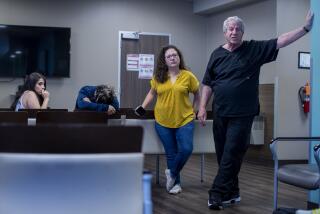Prescriptions Per Visit Up in Decade
The average number of drugs prescribed for each doctor’s visit grew an average of 17% over a decade, with patients age 45 and older accounting for 53% of the appointments in 2001, according to a U.S. government study.
Physicians administered or prescribed an average of 1.4 medicines per visit in 2001, up from 1.2 in 1992, said Donald Cherry of the National Center for Health Statistics in Hyattsville, Md., who led the research. In 1992, older patients made up only 42% of office visits.
Among the most frequently prescribed drugs in 2001 were Celebrex and Vioxx, newly marketed to treat arthritis pain, according to the study. Lipitor, a cholesterol drug, Claritin, for allergies, and the diuretic Lasix round out the top five drugs in 2001. In 1992, the antibiotic Amoxicillin was the most frequently prescribed drug.
Previous studies have indicated that most doctors say they don’t have enough time to address all patient concerns. The aging patient population is coming to doctors’ offices with more illnesses and needing more medical advice and treatment, Cherry said.
The study also said that while the number of people in the U.S. who are 45 and older rose 11% during the last decade, doctor visits by that age group jumped 26% in the same period, based on data from more than 24,000 patient records.
“People are living longer, and the longer they live, the more varied and complex their medical problems are,” said Edward Hill, a trustee board member with the American Medical Assn., the nation’s largest doctor group.
Americans made almost 900 million visits to doctors’ offices, or about three visits per person, according to the 2001 National Ambulatory Care Medical Survey.
“Patients have more problems that need chronic medical attention,” Cherry said. “We also have a society that’s more health-conscious than ever before.”
Doctors made about 10% more diagnoses in 2001 than in 1992, according to the study. Physicians must consider a growing number of treatment options for heart disease and other common conditions while guarding against interactions between powerful drugs that can do more harm than good, said Hill, who also is a family physician in Tupelo, Miss.
The study also said there were more visits with diagnostic and screening services ordered or performed in 2001, up 28% since 1992.
In addition, visits to the doctor in which surgical procedures were performed in the office increased by 81% in the 10-year period.
More to Read
Start your day right
Sign up for Essential California for news, features and recommendations from the L.A. Times and beyond in your inbox six days a week.
You may occasionally receive promotional content from the Los Angeles Times.






